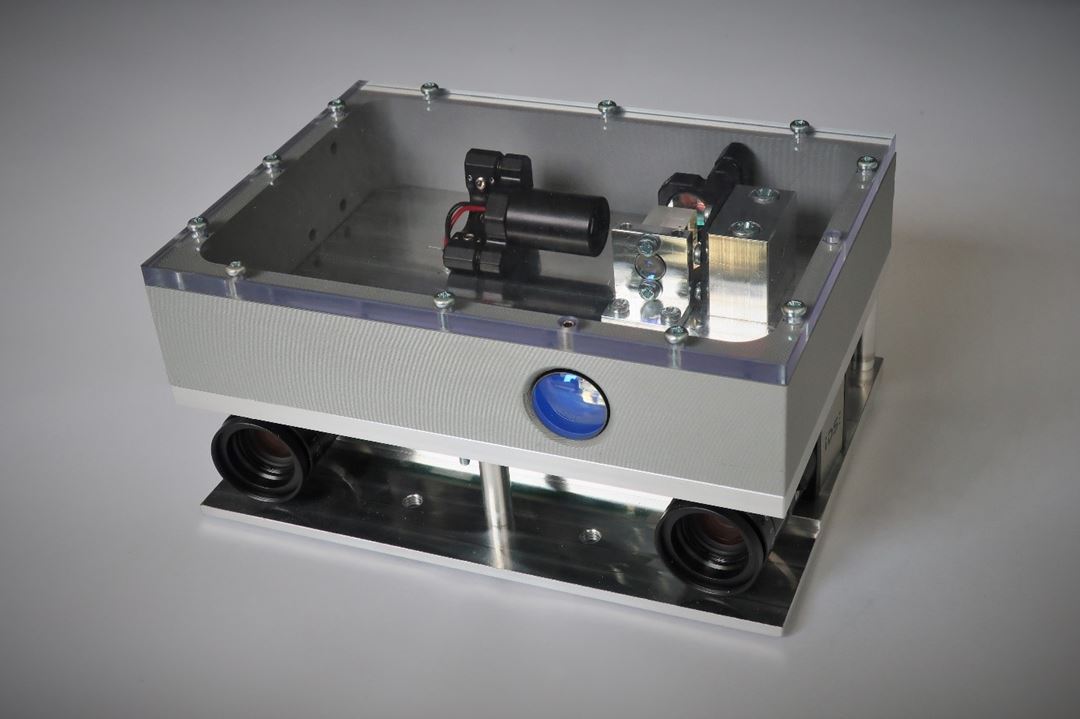Researchers at SINTEF have more than 15 years of experience in development of 3D cameras. The spinoff-company Zivid provides world-class 3D cameras for industrial robotics and quality measurements. These cameras use Digital Micromirror Devices for pattern projection, which provides extreme measurement capabilities, but at the cost of fairly complex and power-hungry hardware. In 2011, we started investigating possibilities for simple and compact projectors. A unique, steerable micro-mirror developed at SINTEF MiNa-lab opened the possibility of a brand new type of projection system, namely interferometric fringe projection.
When the European Space Agency (ESA) approached us with a wish to bring 3D measurements into space, it became evident that it is not desirable to use a traditional 3D camera, as these systems are too heavy, complex, power-hungry, fragile and don't operate in sunlight. The advantages of interferometric fringe projection became evident, as such a projector can overcome all of the above-mentioned shortcomings.
With the finalization of this project, we have taken our novel projection and 3D measurement system from an idea in 2011 to a fully functional prototype in 2020. The camera is compact, simple and low-power, and provides 3D images with 500x500 pixels and a measurement error of 0.2 mm. We have also verified that the unique mirror component survives temperature cycling, vibration and gamma radiation without any degradation of performance.
Aside from applications in space, such a low-complexity 3D camera could fill the gap between low-resolution cameras such as the RealSense, and the high-end cameras such as the Zivid.
i

